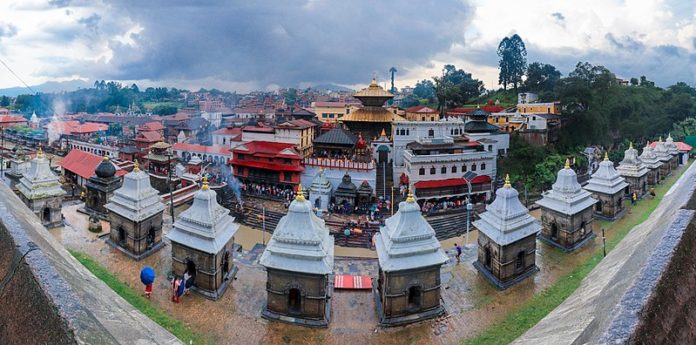Temples are a place of worship for Hindus. There are a lot of temples that are very old and have a story to tell which makes us become aware and feel good about our rich cultural heritage. One such temple is Pashupatinath temple, dedicated to lord Shiva or the Lord of Pashus (Animals).
By Prathima.G.Kulkarni
Pashupatinath temple is located on the banks of Bagmati River, which is around 5 kilometers north – east of Kathmandu in the eastern part of Kathmandu valley in Nepal.The temple was originally built around 400 BC according to the inscriptions found inside the temple. Lichhakavi King, Prachanda Deva was the one who built the existing temple in the 5th century according to Gopalraj Aalok Vamsavali, the oldest ever chronicle present in Nepal. The reconstruction of the temple happened as the old temple was consumed by the termites.
This temple is one among the 7 UNESCO heritage sites of Kathmandu valley. This temple is a scared Jyotirlinga of Shiva in Nepal and the remaining 12 Jyotirlingas are found in India. The 12 Jyotirlingas of India are considered to be the Body of Shiva where as the Jyotirlinga in Nepal is considered to be the head. Jyotirlinga is a devotional representation of Lord Shiva which means “The Radiant Sign of Almighty Shiva”.
The temple complex is very vast which stands on a land of 264 hectares. The temple premises consist of more than 518 temples and monuments. It also includes ashrams, images and inscriptions which are raised over the centuries along the banks of Bagmati River. The temple is one among the 275 Tamil Paadal Petra Sthalams in the continent. Paadal Petra Sthalams are mentioned in the verses of Saiva Nayanars during the 6th to 9th century CE. These are the greatest temples of Shiva in the continent.
The story of the origin of this temple goes like this. Lord Shiva and Goddess Parvathi took the form of deers and visited Earth in order to take a break from their cosmic work. As they entered the forest regions of Nepal, they were spellbound by what was in front of them and when they came near the bank of Bagmati River, they decided that they would stay there for eternity. When other gods and saints wanted them to come back and continue with their cosmic work Lord Shiva refused and sent them away. Hence, with no other option, Lord Shiva was taken by force and during this he lost one of the antlers as he was in the form of a deer. This was first worshiped as Lingam in Nepal.
The lingam was lost for several centuries as it was reclaimed by mother earth. One day Kamadhenu, deity in the form of cow came to earth and gave her milk around the region where the Lingam was present and retrieved the Lingam. Later, villagers saw this and built a wooden temple. According to one of the inscriptions found inside the temple, the wooden temple built by the villagers was glowing during the 800 AD.
The main temple is constructed in the pagoda style which includes cubic constructions and carved wooden rafters. The roof of the temple is of two levels and has carvings of copper with gold on them. The main temple consists of Gold peak and consists of two Garbhagrihas (sanctum sanctorum), one inside and the other is outside. The inner Garbhagriha is where the idol of Lord Shiva is found and the outer is an open corridor like space.








